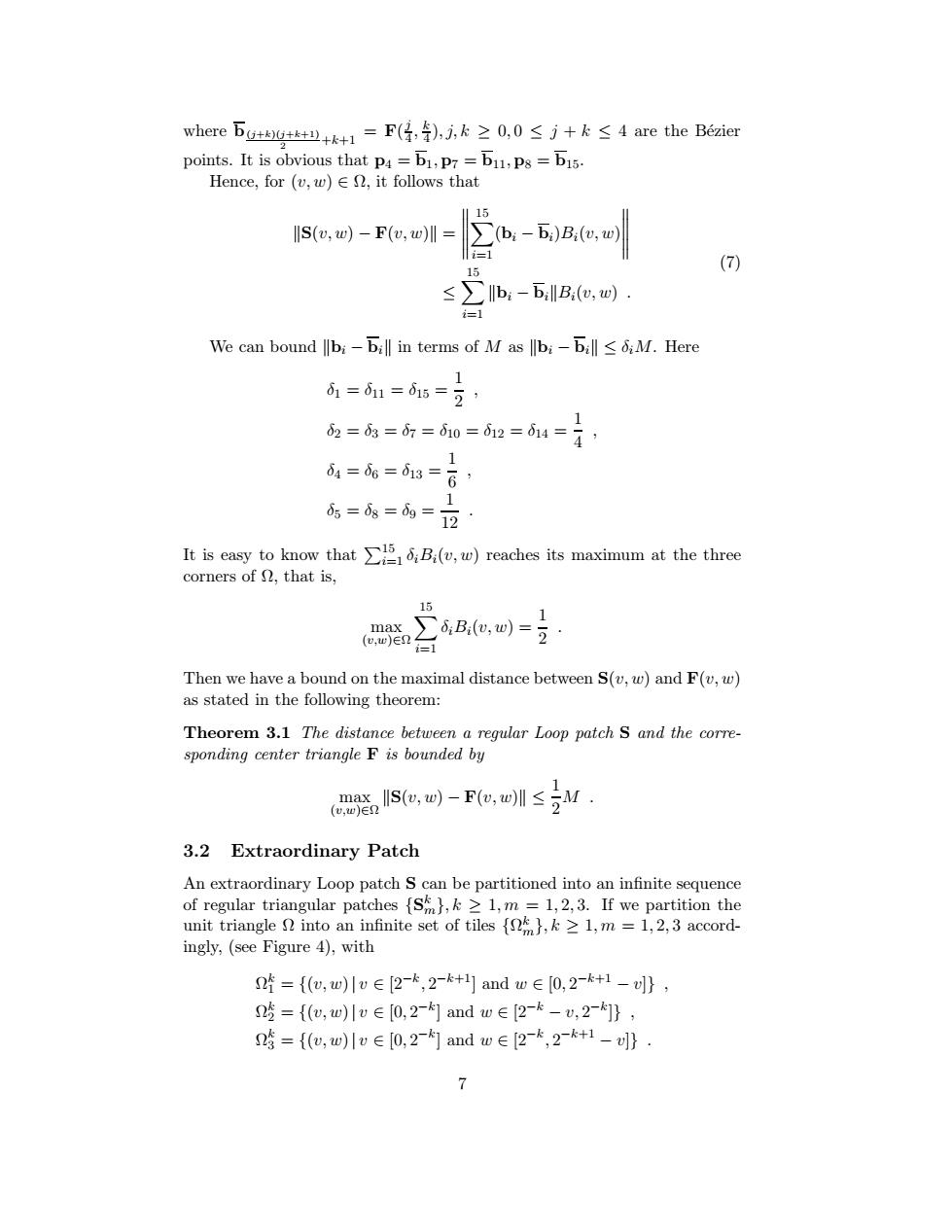正在加载图片...

=Ff,)i.k≥0.0≤i+k≤4 are the Be2e oepu s三-EBe时 Ve n botd,-万in terms of,-万l≤ii,irc 6=bu=ius= 2=函==加=2=4= d==4= 瓜=函=M=司 natz出&dt te th anniedthmaaaeotetmmseado 3.2 Extraordinary Patch 时={0e,rlv∈2k,2 and we0,2kH-} =(e,w).2-*]and w e [2- 7 where b(j+k)(j+k+1) 2 +k+1 = F( j 4 , k 4 ), j, k ≥ 0, 0 ≤ j + k ≤ 4 are the B´ezier points. It is obvious that p4 = b1, p7 = b11, p8 = b15. Hence, for (v, w) ∈ Ω, it follows that kS(v, w) − F(v, w)k = X 15 i=1 (bi − bi)Bi(v, w) ≤ X 15 i=1 kbi − bikBi(v, w) . (7) We can bound kbi − bik in terms of M as kbi − bik ≤ δiM. Here δ1 = δ11 = δ15 = 1 2 , δ2 = δ3 = δ7 = δ10 = δ12 = δ14 = 1 4 , δ4 = δ6 = δ13 = 1 6 , δ5 = δ8 = δ9 = 1 12 . It is easy to know that P15 i=1 δiBi(v, w) reaches its maximum at the three corners of Ω, that is, max (v,w)∈Ω X 15 i=1 δiBi(v, w) = 1 2 . Then we have a bound on the maximal distance between S(v, w) and F(v, w) as stated in the following theorem: Theorem 3.1 The distance between a regular Loop patch S and the corresponding center triangle F is bounded by max (v,w)∈Ω kS(v, w) − F(v, w)k ≤ 1 2 M . 3.2 Extraordinary Patch An extraordinary Loop patch S can be partitioned into an infinite sequence of regular triangular patches {S k m}, k ≥ 1, m = 1, 2, 3. If we partition the unit triangle Ω into an infinite set of tiles {Ω k m}, k ≥ 1, m = 1, 2, 3 accordingly, (see Figure 4), with Ω k 1 = {(v, w)| v ∈ [2−k , 2 −k+1] and w ∈ [0, 2 −k+1 − v]} , Ω k 2 = {(v, w)| v ∈ [0, 2 −k ] and w ∈ [2−k − v, 2 −k ]} , Ω k 3 = {(v, w)| v ∈ [0, 2 −k ] and w ∈ [2−k , 2 −k+1 − v]} . 7